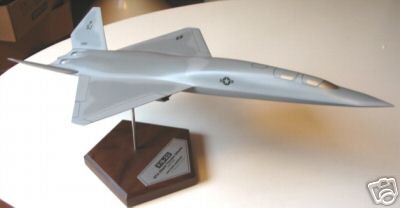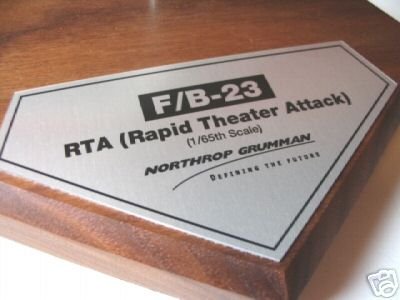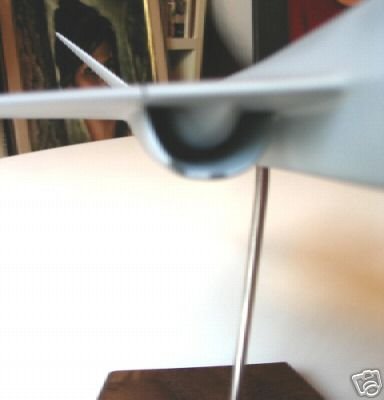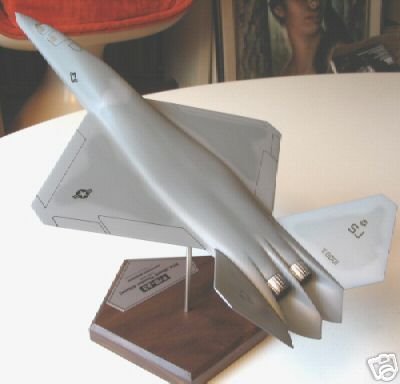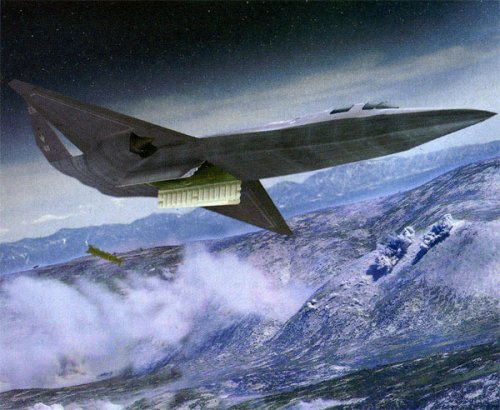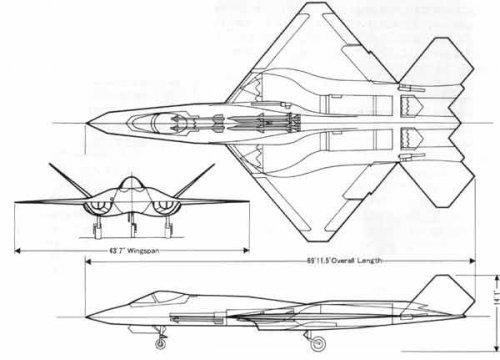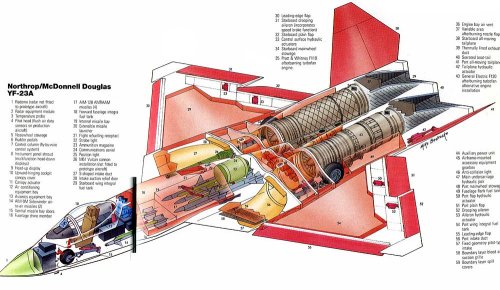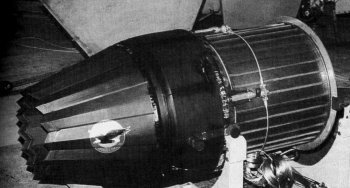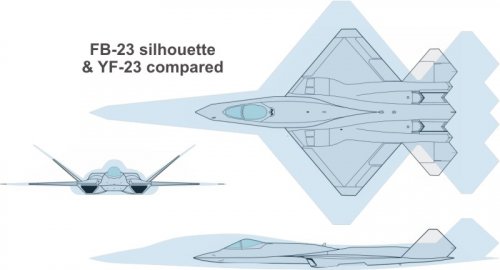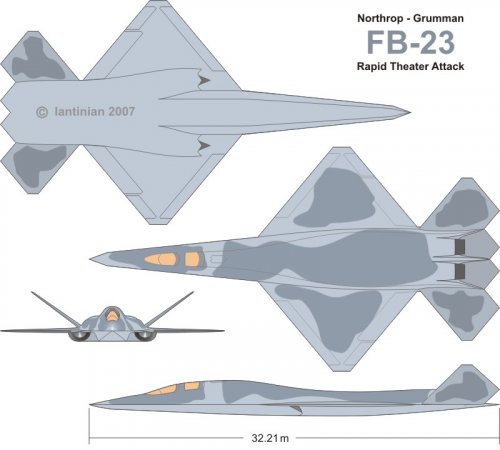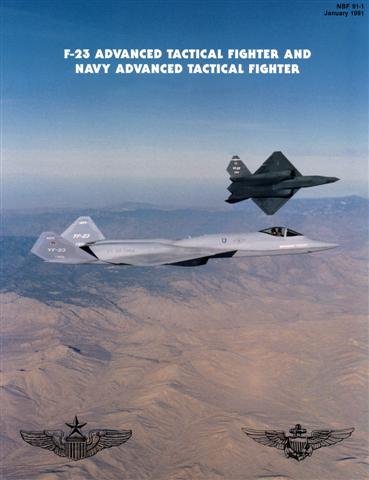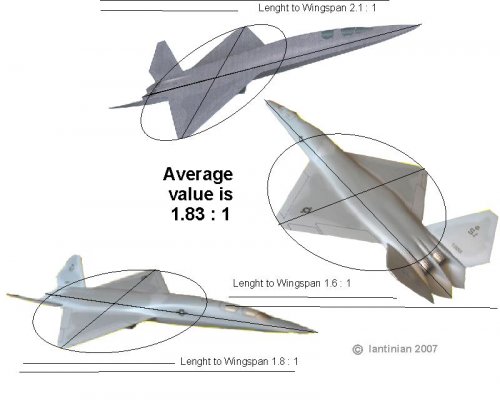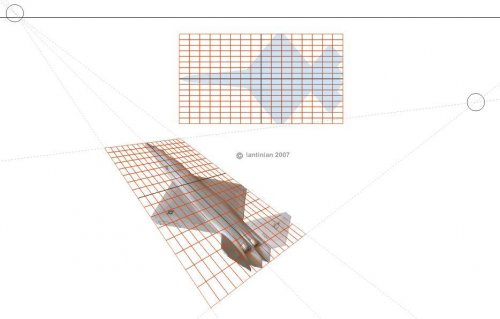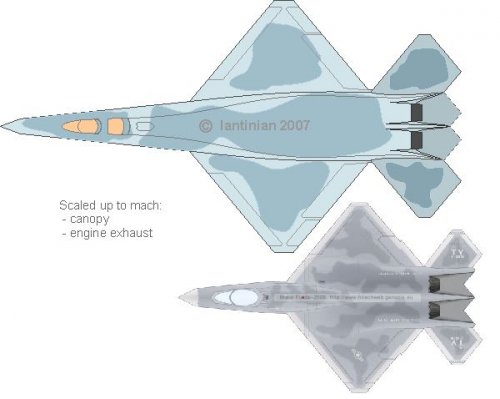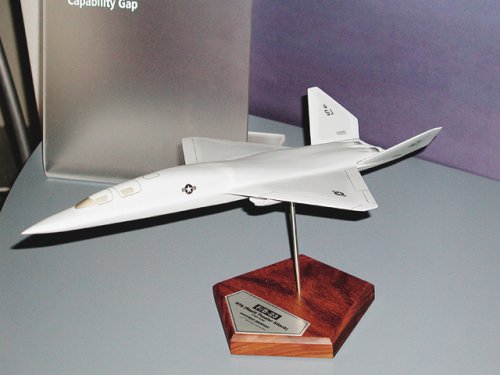Interesting stuff from Flight International archives
Northrop slip reveals ATF payload details
FLIGHT INTERNATIONAL 4-10 July 1990
BY JOHN BAILEY
IN LOS ANGELES
Detailed drawings of the Northrop/McDonnell Douglas YF-23 Advanced Tactical Fighter (ATF) prototype, which were inadvertently released after the roll-out ceremony on 22 June, appear to have revealed the aircraft's still-classified payload. The classified drawings, which were hastily retrieved by embarrassed Northrop officials, clearly showed a single ventral weapons bay beneath and slightly aft of in the cockpit, with stowage points for four air-to-air missiles. A plan-view drawing appeared to depict two AIM-9 Sidewinders mounted forward of two AIM-120 AMRAAMs, although this would be a remarkably small payload for a long-range air superiority fighter. The aircraft will also carry a 20mm cannon in the starboard fuselage. The McDonnell Douglas F-15, which ATF will replace, has eight missile stations and can carry a mixture of Sparrows, Sidewinders or AMRAAMs.[...]
Compensation wrangle delays Northrop ATF
FLIGHT INTERNATIONAL 24-30 January 1990
BY JOHN BAILEY
IN LOS ANGELES
Northrop is close to resolving a compensation dispute with the US Air Force which had brought work on the YF-23
prototype which the company is building in association with McDonnell Douglas for the Advanced Tactical Fighter (ATF) programme to a virtual standstill. Northrop president Kent Kresa says that the company had asked for substantially more than the $52 million offered by USAF as compensation for a six-month programme slippage. Admitting that it was in the company's interest to accept the offer, Kent said it was " . . . not so much the dollar figure, as clarifying the ground rules". These have still to be established, he added. Northrop and McDonnell, developing the YF-23 ATF candidate in competition with a team led by Lockheed, developing the YF-22 contender, had refused to accept USAF's "take it or leave it" offer of $52 million to cover expenses resulting from a six-month extension to the demonstration/validation (DEMVAL) phase. As a result, the companies had now begun to lay off staff involved in ATF work, or were re-assigning them to other programmes. Lockheed announced last week that it has accepted the Air Force's offer, despite estimating the true cost of the programme extension at $f00 million.
The Lockheed YF-22 team includes Boeing and General Dynamics. The first Northrop/McDonnell YF-23 has already been delivered to Edwards AFB in California in preparation for a public rollout, and the second prototype is due there shortly. The Northrop team was reportedly angered by USAF's decision to extend DEMVAL because it damaged its "competitive stance". The team has always planned to fly its prototype before Lockheed's YF-22, and was apparently close to meeting the original schedule. The Air Force decided to extend DEMVAL last October, citing the need to develop a carrier-suitable variant of the ATF to meet a US Navy requirement for an F-14 successor. The Northrop team apparently claims that its costs will increase by nearly $180 million. While the impasse continues, Lockheed is proceeding with final assembly of its YF-22 prototypes in Palmdale, California. The aircraft should be ready to fly to Edwards after a public rollout by the middle of this year. Both contractor teams are on matching $691 million DEMVAL contracts, but are estimated to have invested at least the same amount of their own money in developing the rival prototypes. USAF plans to buy 750 ATFs.
Northrop accepts ATF payment
FLIGHT INTERNATIONAL 31 January-6 February 1990
Northrop and McDonnell Douglas have accepted the US Air Force's offer of $52 million in compensation for the six month slippage in the Advanced Tactical Fighter (ATF) programme. They are still negotiating the terms. Earlier, the Northrop-led team building the YF-23 ATF contender started laying off and reassigning workers from its ATF effort after reaching an impasse in negotiations with the Air Force (Flight, 17-23 January). Northrop said last week: "We are still negotiating with the Air Force. We need to make sure that we have a firm understanding of what the extension means, so we can proceed from there." The Air Force announced the extension of the demonstration and validation (demval) stage, last October, citing the extra work needed to develop a carrier-suitable variant as a possible F-14 successor. The Air Force estimated the total cost of extending demval at $550 million and said that it would not expect the contractors to meet this.
NASA could rescue redundant YF-23s
FLIGHT INTERNATIONAL 5 - 1 1 June, 1991
BY GUY NORRIS
Northrop is offering NASA use of its two YF-23 prototypes for flight research rather than see them scrapped. The
aircraft became redundant after losing the recent Advanced Tactical Fighter (ATF) competition to the Lockheed-led F-22 (Flight International, 1-7 May). Northrop says the YF-23's large, close-coupled V-tails provide high pitch, roll and yaw rates at low speeds, high angle-of-attack (AOA) and would provide an ideal tool for high-alpha and post-stall-manoeuvre advanced airborne research. If NASA rejects the offer, details of which are not clear, then the outlook for the aircraft is bleak. "We can't give them to a museum because of the classified materials which make them up," says Paul Metz, Northrop chief test pilot for the programme, "so they will probably be destroyed or end their days gathering dust on the Edwards ramp....unless our research proposals to NASA are accepted."
Speaking at the Society of Experimental Test Pilots' meeting at Bath, England, Metz gave new details of the YF-23 test programme. Referring specifically to the aircraft's high-alpha capability he says: "We demonstrated precise control at 25° AOA at low airspeed and very high roll and pitch performance at supercruise". Metz criticised the fly-off concept, adding: "We still don't fully understand the reasons why we failed". Speaking about the competition he said: "People need to look at this in several ways, but it is the riskiest approach. It's one thing to have two new aircraft, but to have two new engines as well is a formula for disaster. It didn't happen but people should ask themselves why." In all, the two YF-23s flew 65.2h during 50 flights over 14 weeks. A total of five pilots checked out on the aircraft, two US Air Force and three from the Northrop/McDonnell Douglas team. The flight envelope was expanded during the short programme to Mach 1.8 and altitudes of 50,000ft (15,150m).
Metz says that engine thrust and aircraft drag estimates were "a bit pessimistic" and supercruise speeds were higher than predicted. The Pratt & Whitney F119-powered YF-23A achieved a standard-day supercruise speed of M 1.43 while the General Electric FI20-powered variant achieved "...a higher speed. Both engines were stall free
even under extremely adverse conditions like full afterburner lights at 50,000ft and 180kt [330 km/h calibrated air speed [CAS]". Metz adds that the aircraft has "...an impressive supersonic turn performance and its low wing loading gives it excellent low-speed capabilities". Other highlights include "excellent formation and aerial refuelling characteristics", and the "...best gun tracking to 4gs I've seen", says Metz. One incident, which almost resulted in the loss of the second YF-23A, prototype air vehicle (PAV) 2, occurred on its third flight at 26,000ft when fuel "...streamed heavily" from overflow valves as the tanks over-pressurised by 80%. "Fortunately the tanks didn't burst," says Metz, who explains that the cause was traced to a 3mm diameter sensing tube linked to the pressure-regulating valve. The tube was blocked with manufacturer's material and was sensing ground pressure. Other incidents included windscreens cracking on both aircraft. The polycarbonate composite screen cracked at M 1.6 on PAV-1 and at M1.8 on PAV-2. The nosewheel, an off-the- shelf F-15 unit, also shimmied during high-speed taxiing trials at HOkt CAS. The problem was solved by a 5kg "scissor-link" attached rigidly to the lower strut arm.

